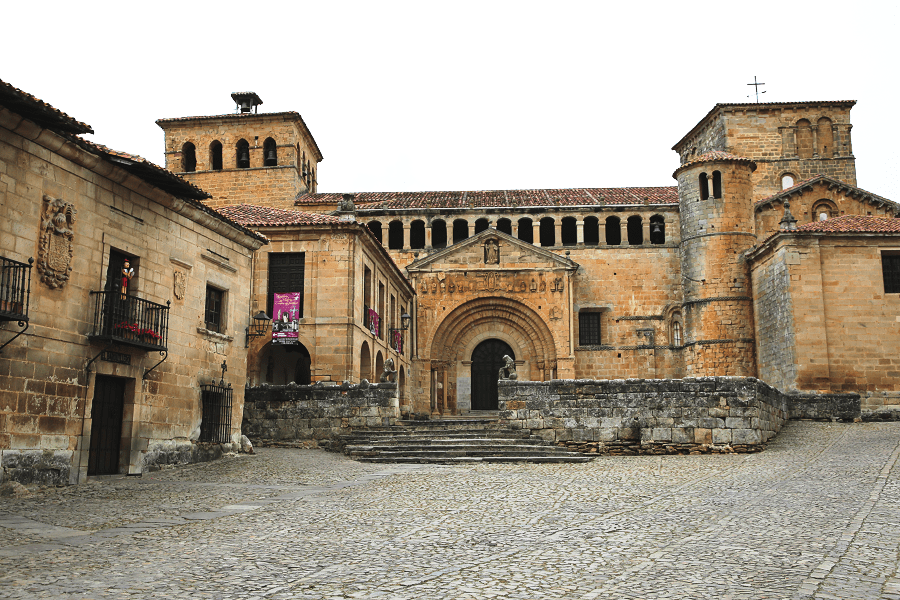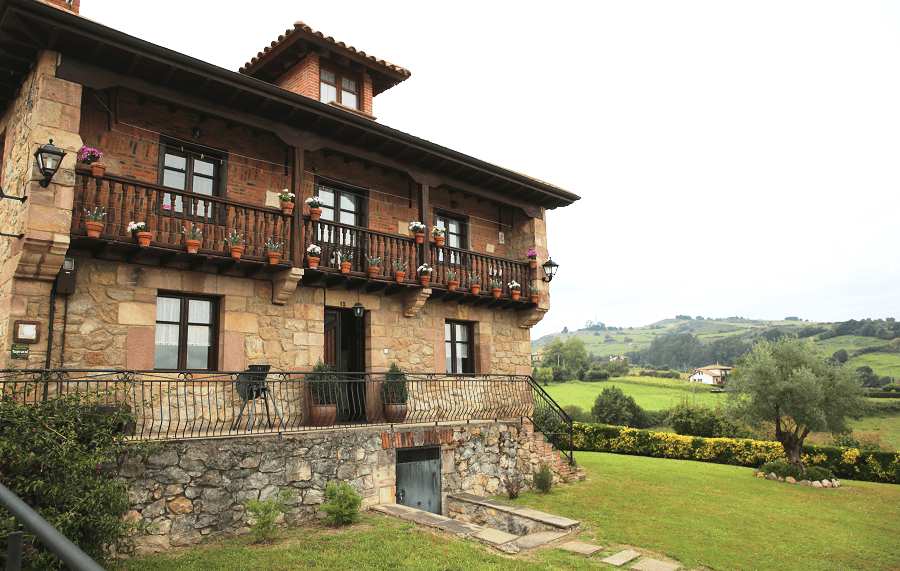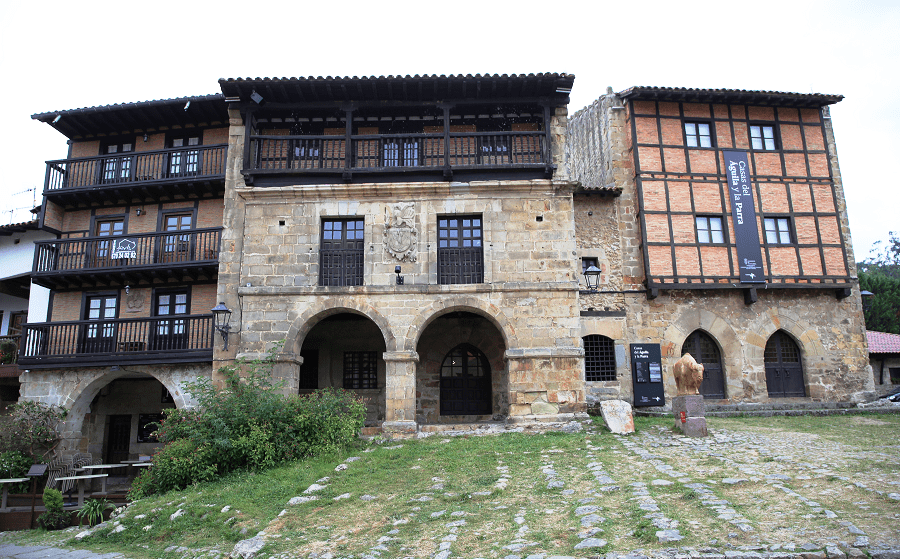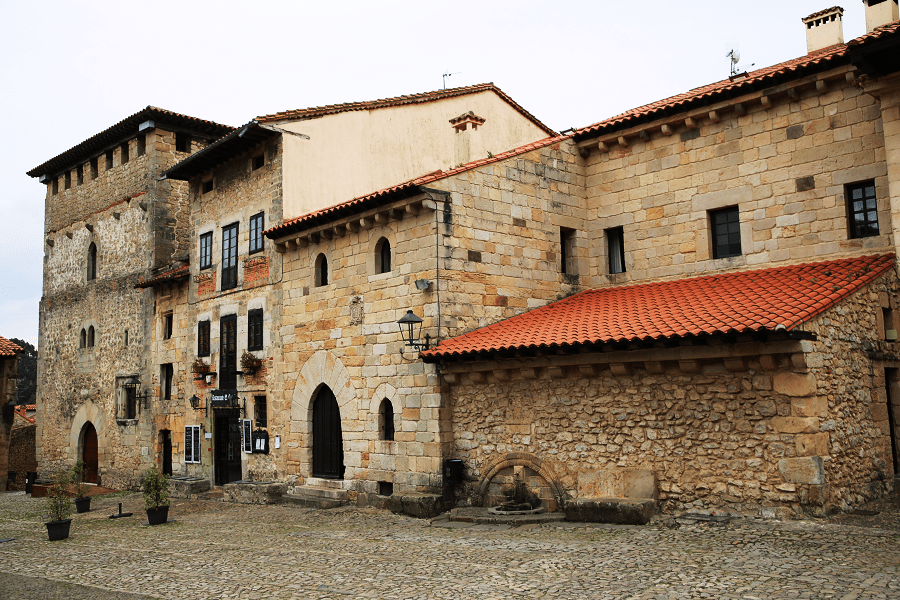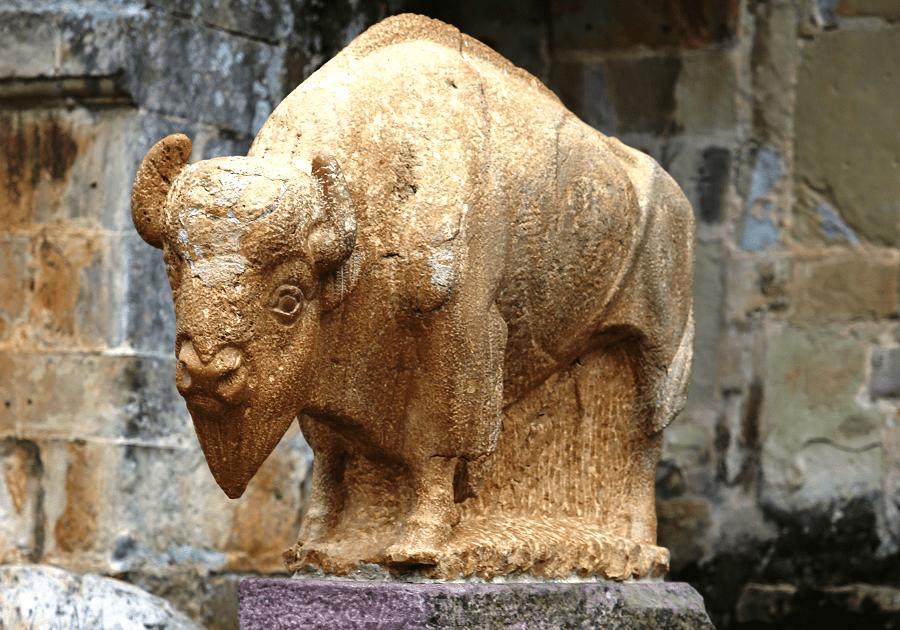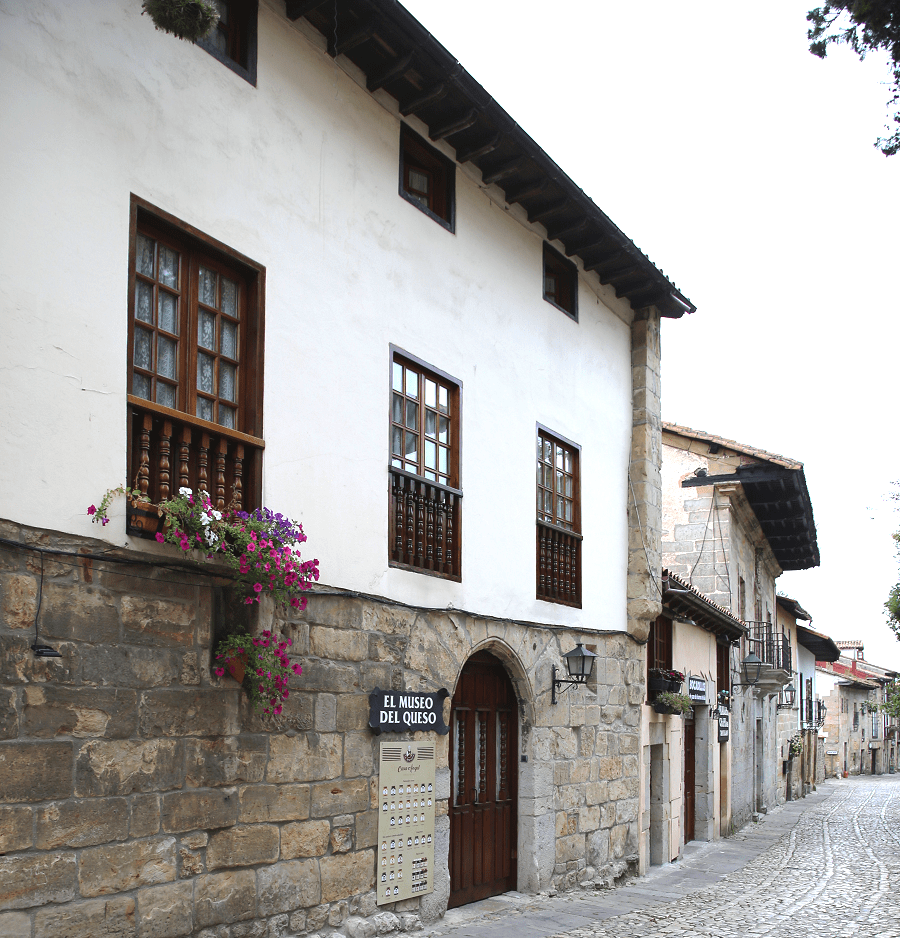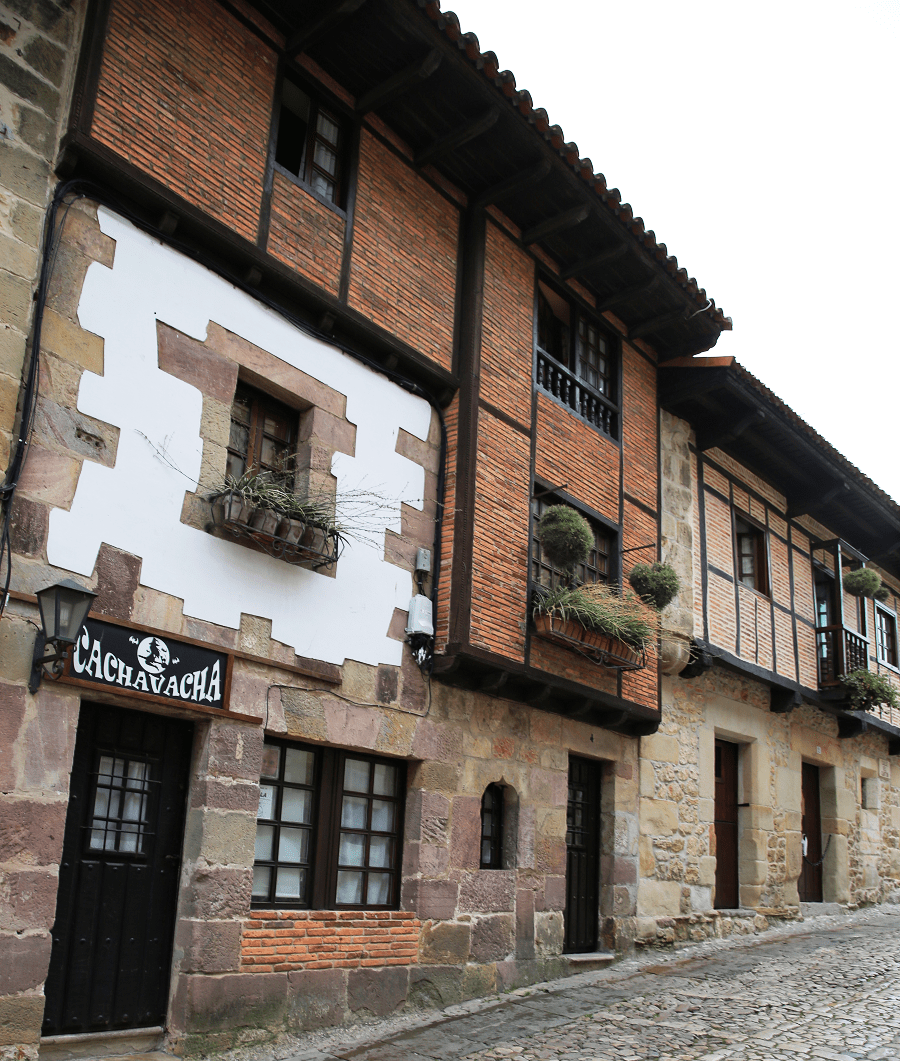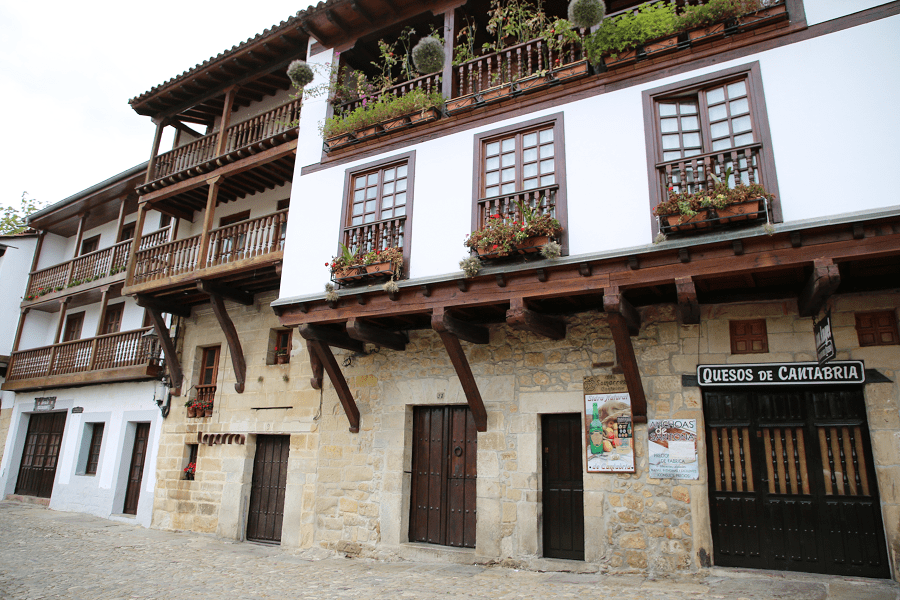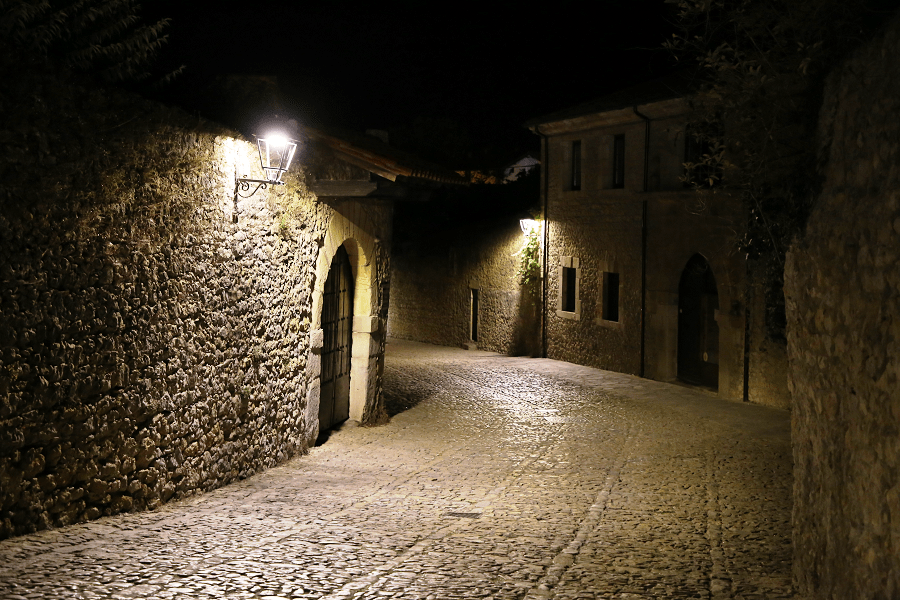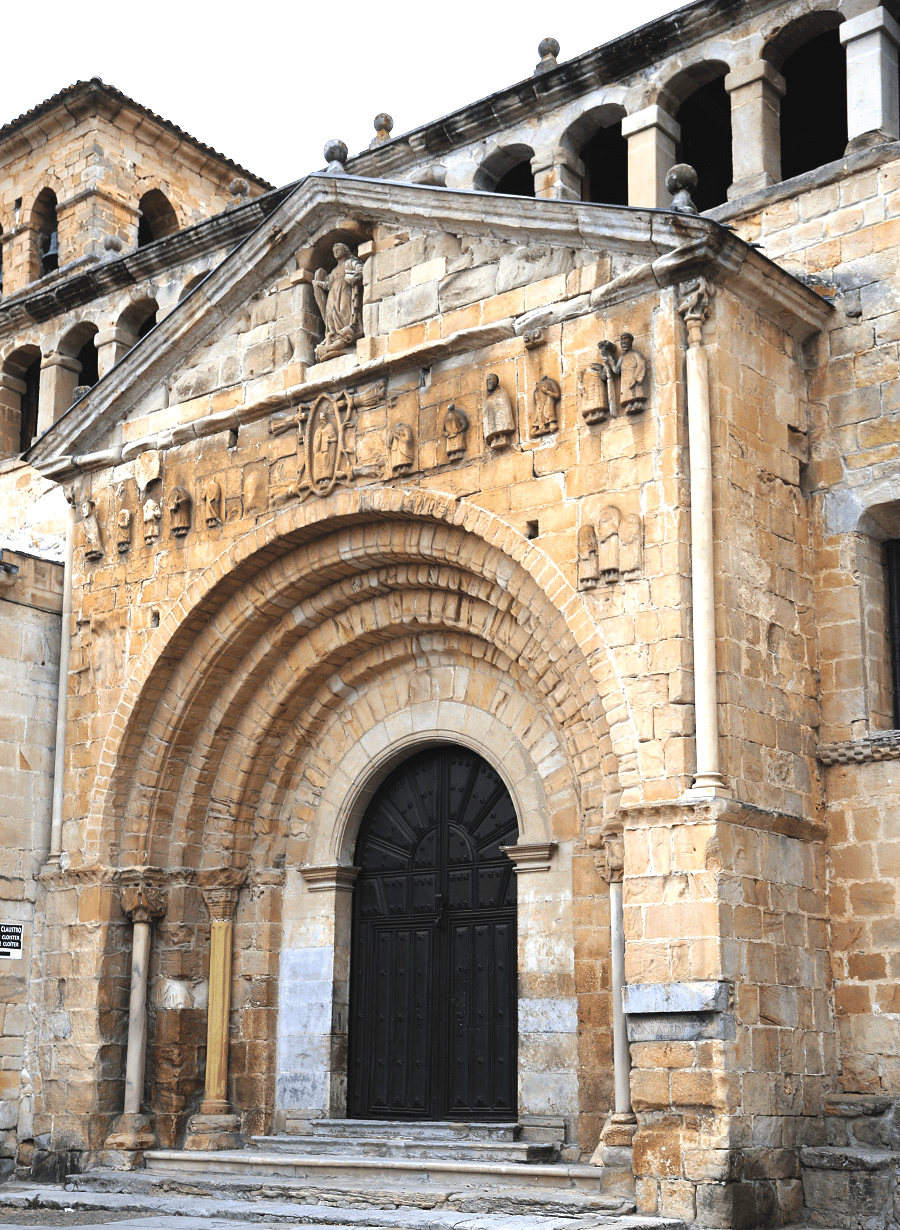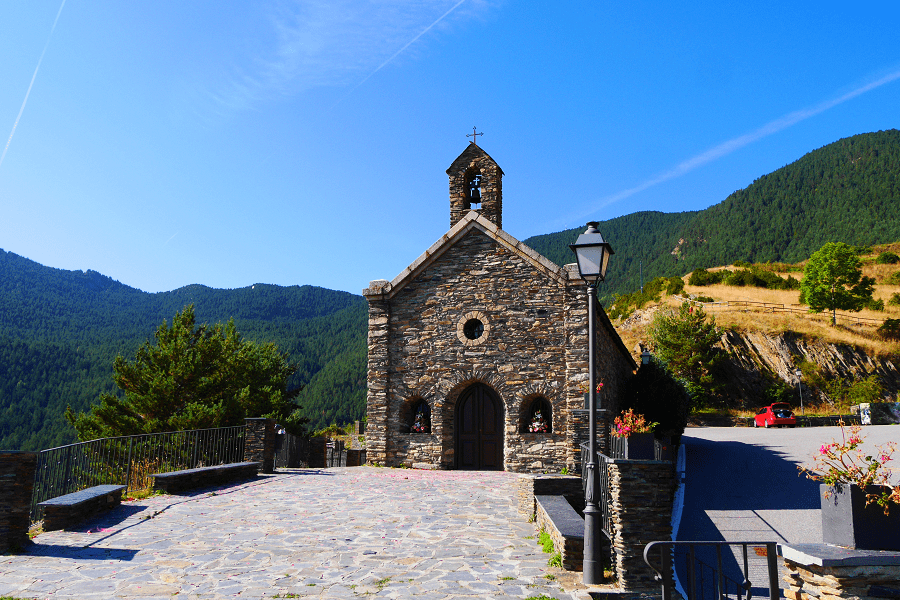Santillana del Mar is a municipality and a town in the autonomous community of Cantabria (Spain). It is located on the western coast of Cantabria. It is popularly known by the nickname of “the town of the three lies”, since according to the popular saying “it is neither holy, nor flat, nor has a sea” (the town does not border the sea, although its municipality does).
The Camino de Santiago del Norte passes through the city.
The town was declared a Historical-Artistic complex in 1943.
In its vicinity is the Altamira cave, protected as a World Heritage Site.
It is one of the most touristic and most visited towns in Cantabria, being an essential stop for tourists visiting the region. This has meant that a large part of the inhabitants of the municipality live from tourist activity, especially from the hotel industry, rural accommodation and shops of typical products.
Since 2013 the city has been a part of the network “The most beautiful towns in Spain“.
Tourism and main attractions
Among the outstanding buildings of the town:
Valdivieso Palace or House of the Valdivieso, today the Altamira hotel. It dates from 1710. It is located at the end of Calle del Cantón, on the right. It has a blazon located in the corner.
Palace of Velarde or of the Arenas. It is located in the Plaza de las Arenas. It is a transitional building from Gothic to Renaissance, construction began in the 15th century and was modified in the 17th century. The façade has a stepped gable and decorative pinnacles. It has the coat of arms of the Velarde.
Collegiate Church of Santa Juliana. It is located at the end of the two streets of the town. It is a Romanesque-style collegiate church, erected for the most part in the middle of the 12th century, rebuilt by the Polanco family in the first third of the 16th century.
Collegiate Church is protected by Royal Order of March 12, 1889. It was the first Cantabrian monument that obtained this recognition.
Houses of the Quevedo and Cossío are located next to the Collegiate Church. They date from the 17th-18th centuries. They are two houses placed squarely so that they form a single house. The house on the north side is the Casa de Cossío and the one on the south side is the Casa de Quevedo. In the first one, the Cossío coat of arms can be seen. In the second, which belonged to a relative of Francisco de Quevedo y Villegas, you can see the coat of arms of the Quevedo family.
House of the Archduchess or Abbots. It is a building that is to the left of the Collegiate Church. Mansion from the end of the 17th century. It belonged to the Barreda Bracho family. The shields on the façade are modern, the work of Jesús Otero.
House of the Hombrones or House of the Villa. It is located next to the so-called house of Leonor de la Vega, on Calle del Cantón. It is a house built between the 15th and 17th centuries. It was named after the two mustached knights.
House of the Polanco and Lasso de la Vega or House of Leonor de la Vega. It is located on the street of the canton. It is from the end of the 15th century and the beginning of the 16th century, built by Don Juan de Polanco. According to tradition, Dona Leonor de la Vega, mother of the first Marquis of Santillana, lived in this building. On the façade you can see three Gothic shields of the Polanco-Lasso de la Vega alliance.
Torre del Merino or La torrona is located in the old market square. It is a 14th century tower, topped by battlements.
Don Borja Tower or Santillana Foundation is located at Plaza de Ramón Pelayo. It seems to be from the late 15th or early 16th century. On the sides of the parapet there is a shield with the Barreda coat of arms. It has an interior patio. It owes its name to Don Francisco de Borja Barreda, the last descendant of the Barreda family in the 19th century. Among its later owners was the Infanta Doña Paz de Borbón. In 1981 it was restored to be the headquarters of the Santillana Foundation.
Barreda-Bracho Palace, also called Barreda-Bracho House or Barreda Palace. Since 1944 it is currently the Gil Blas National Parador. It is in the Plaza de Ramón Pelayo. It is a baroque style building erected at the end of the 17th century.
Town hall is located at Plaza Ramón Pelayo. Its cast iron balcony with a shield on top is notable.
Casa de la Parra is so called because it had a large vine on its facade. This is a Gothic building from the early 16th century.
The Eagle House dates back to the seventeenth century. It is currently the exhibition hall of the regional government.
In front of these houses there is a bison, a sculpture by Jesús Otero.
Bustamante’s house is located at calle de la Carrera. It dates from the end of the 17th-18th century. It is a high-rise building with balconies. The Bustamante coat of arms can be seen on its façade.
Torre de los Velarde is an old house-tower from the 15th century, in ashlar stone with two Gothic doors.
Benemejís Palace, also known as Palacio de los Peredo-Barreda or Palacio de Peredo. It is currently the headquarters of Caja Cantabria exhibitions. On the façade you can see the coat of arms of the Peredo family. It preserves paintings by painters such as Valdés Leal or Mengs, as well as an extensive library.
House of the Villa is located in front of the Palace of Benemejís.
House of the Alonso is located next to the Palace of Benemejís.
Regina Coeli Diocesan Museum is located in a Dominican monastery. The original building dates from the mid-seventeenth century, but was extensively rebuilt during the first two decades of the eighteenth century. The museum was founded in 1964, it exhibits sacred art. It houses a restoration workshop and the Diocesan Documentary Archive.
Convent of the Dominicas or Convent of San Ildefonso is located in front of the Diocesan Museum. It was founded in the middle of the 16th century.
Natural heritage
As for the natural heritage, it is worth highlighting the Santillana del Mar Zoo, the oldest in the region. El Jardín Finca grows eucalyptus 35 meters high, ginkgo 22 meters high as well as oak tree 16 meters high.
The municipality has a narrow coastal strip between Puerto Calderón (Cantabria) and Ubiarco, characterized by cliffs.
How to get to?
From Santander 31 min (29.7 km) via A-67
From Madrid 4 hr 11 min (440 km) via A-67
Main information
Area: 28 km²
Coordinates: 43°23′36″N 4°06′17″W
Population: 4231
Languages: Spanish, Asturian
Currency: Euro
Visa: Schengen
Time: Central European UTC +1



